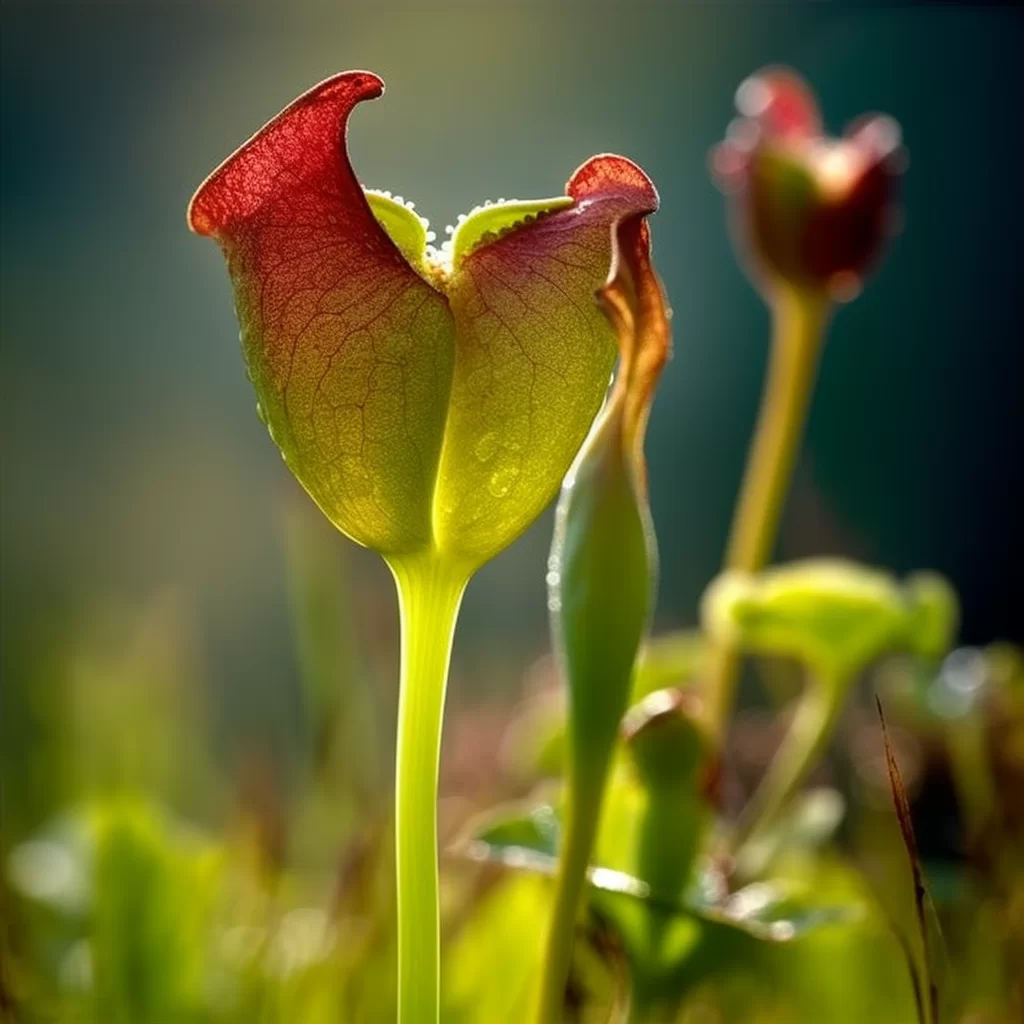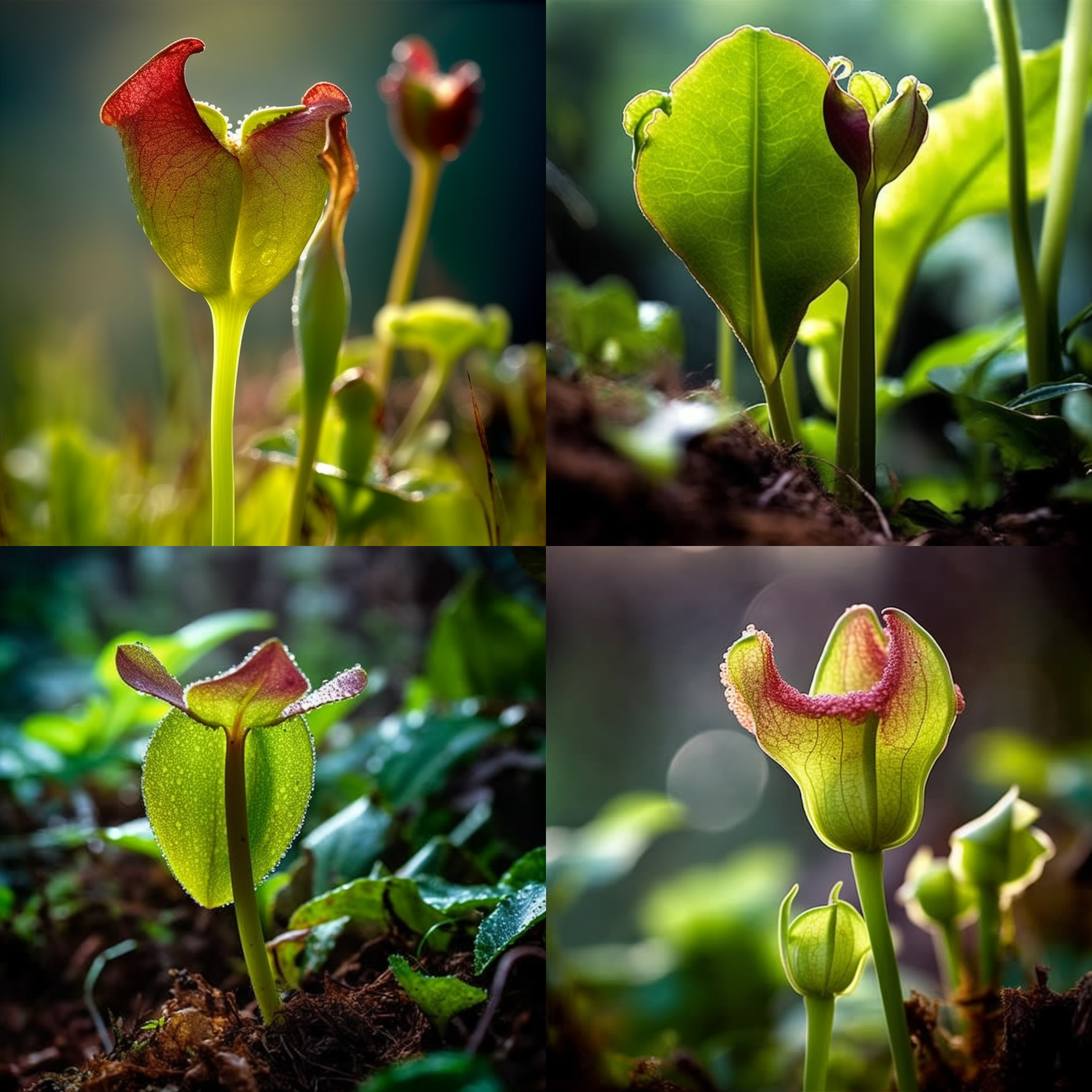Story of Day :
Contents
The Pitcher Plant: A Complete Guide and Care Tips
Are you tired of having the same old garden plants? Do you want something unique and exotic to add to your collection? Look no further than the pitcher plant! These carnivorous plants are not only fascinating to look at, but they also serve a purpose in controlling pesky insects in your garden. In this article, we will provide a complete guide on how to care for pitcher plants.
What is a Pitcher Plant?

Pitcher plants belong to the carnivorous family of Sarraceniaceae and are native to North America. These unique plants have specialized leaves that form into deep cups or tubes with lids called ‘pitchers.’ The pitchers are filled with digestive enzymes that allow them to trap insects inside for their nutrients. Unlike other carnivorous plants such as Venus Flytraps or Sundews, pitcher plants do not require direct sunlight and have adapted well in swampy environments.
Pitcher Plant Care Tips

- Light: Pitcher plants prefer bright indirect light rather than direct sunlight since it can cause damage or burn their leaves. Place them near north-facing windowsills or under grow lights if indoors.
- Water: Since these swamp-loving creatures thrive on moist soil, they should be kept consistently damp but not waterlogged. Use distilled water or rainwater instead of tap water as it contains high levels of minerals and chemicals that can harm them.
- Fertilizer: Most species do not need fertilizer since they obtain most nutrients from insects caught inside their pitchers. However, during growing seasons (spring-summer), you may use diluted liquid fertilizer once a month at half-strength for optimal growth.
- Soil: Pitcher plants prefer a mixture of peat moss and perlite that is acidic, well-draining, and aerated. A 50/50 ratio is recommended.
- Humidity: Since these plants originated from swamps, they require high humidity levels to survive. Mist them daily or place their pots in water-filled trays to increase moisture levels.
- Temperature: Most species can tolerate a range of temperatures between 60-90°F (15-32°C). However, avoid exposing them to extreme heat or cold as it can be fatal.
Pitcher Plant Species

Pitcher plants come in different shapes and sizes with unique characteristics that make them stand out. Here are some common species:
- Sarracenia purpurea: This plant has an upright growth habit with deep red-purple pitchers that have curved hoods at the top. It prefers colder climates and can tolerate freezing temperatures during dormancy.
- Sarracenia flava: This plant has tall yellow-green pitchers with reddish veins running down the sides. It loves full sun exposure but requires high humidity levels for optimal growth.
- Nepenthes alata: This tropical pitcher plant has elongated tubes that resemble water jugs with intricate patterns on their lids, making them a popular choice for indoor enthusiasts. They prefer bright indirect light and consistently moist soil conditions.
- Darlingtonia californica: This North American native is also known as ‘cobra lily’ due to its striking resemblance to the snake headdress worn by Indian cobras. Their hollow green-yellow pitchers have decorative windows near the top that lure in insects. They prefer cooler temperatures and need high humidity levels.
- Cephalotus follicularis: This Australian pitcher plant is unique due to its dome-shaped pitchers that resemble tiny cups with lids. It can tolerate a wide range of temperatures but prefers cool conditions with high humidity levels.

Common Pitcher Plant Problems
Although pitcher plants are relatively easy to care for, they can face some common issues such as:
- Insects: While they depend on insects for nutrients, some may overpopulate and cause damage to the plant’s growth. Use sterile tweezers or chopsticks to remove dead bugs inside their pitchers.
- Dry soil: Pitcher plants require consistently moist soil conditions; otherwise, their leaves will wilt and turn brown. Check their soil moisture levels regularly and adjust watering accordingly.
- Fungal diseases: High humidity levels can cause fungal diseases such as Botrytis or powdery mildew, which appear as white fuzzy patches on leaves. To prevent this, keep good air circulation around your plants by avoiding overcrowding or misting during nighttime.
Pitcher Plant Fun Facts
If you’re not yet convinced about adding a pitcher plant into your collection, here are some fun facts that might change your mind:
- Pitcher plants were used by Native Americans for medicinal purposes due to their anti-inflammatory properties.
- The largest known species of pitcher plant is Nepenthes rajah found in Borneo with pitchers growing up to three feet long!
In Conclusion…
Pitcher plants are not only unique and fascinating to look at, but they also serve a purpose in controlling pesky insects. Whether you’re an indoor or outdoor gardener, these carnivorous plants can be an exciting addition to your collection. Remember to keep their soil consistently moist, provide bright indirect light and high humidity levels for optimal growth. With proper care and attention, your pitcher plant will thrive and continue to impress your guests with its exotic beauty.
